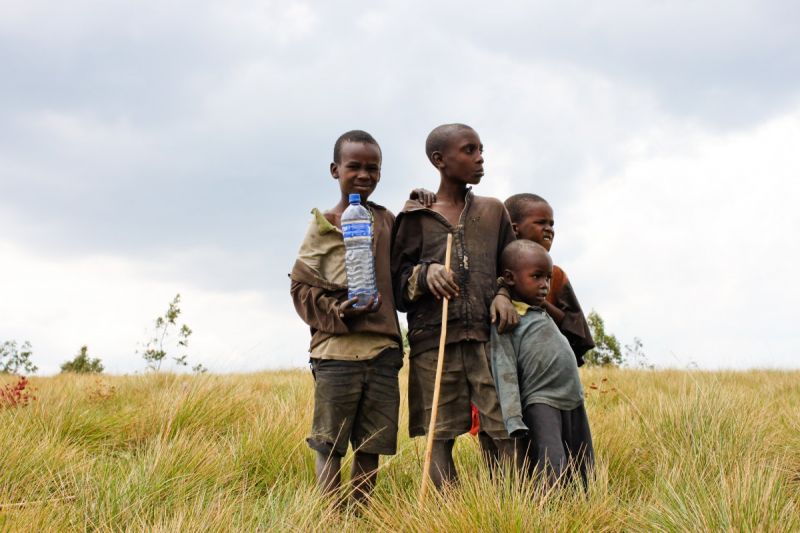Rwanda to Invest $440 Million in Water Supply Projects
Published on by Water Network Research, Official research team of The Water Network in Government
The Ministry of Infrastructure has announced an investment outlay of $440 million for the next three years to build water treatment plants and supply systems in urban and rural areas as it accelerates efforts to ensure that all Rwandan have access to clean water by 2024.
This statement was made by Eng. Patricie Uwase, the Permanent Secretary at the Ministry of Infrastructure, during a press conference organized jointly by officials from Rwanda Utilities Regulatory Authority (RURA) and the Ministry of Infrastructure (MININFRA) to dispel fears of possible hike in water tariffs.

Representative image source: PXhere, labeled for reuse
The Government has earmarked funds to build more water treatment plants following an upgrade on Nzove plant and the ongoing construction of Kanzenze plant that will provide some 40,000 cubic metres to Kigali City and Bugesera District.
“Since 2016 under the new water and sanitation policy we have been increasing investments. For instance, we are investing $440 million in the next three years starting the next fiscal year. $282 million will be invested in water infrastructures in urban areas and $139 million to be invested in water infrastructures in rural areas,” she said.
The Permanent Secretary mentioned that by 2022 all water treatment plants will have been completed.
Eng. Aime Muzola, the Chief Executive Officer (CEO) of Water and Sanitation Corporation (WASAC), said that the water treatment plants will be constructed in two phases.
“There are about new eight plants to be constructed. The first phase includes Gihira water treatment plant to be completed by June next year. Other plants will be built under the second phase as we are (still) conducting studies. The last water treatment plant will have been completed by 2022,” he emphasized.
Among the water treatment plants that are expected to increase supply to rural areas include the one at Ngoma River in Nyagatare and another at Lake Muhazi to supply water in Gatsibo and Kayonza districts.
Officials said that the plant at Lake Sake will also be constructed to supply water to parts of Ngoma District while other plants will be built in Karongi District, Kagaga water treatment plant to supply water to Muhanga town, Busogwe water treatment plant area to supply water to different parts of Nyanza and Ruhango in southern province and tMwoya water treatment plant to supply parts of Rusizi District.
They are all projected to supply a combined 61,500 cubic metres of water in rural Rwanda.
The CEO WASAC said that construction of water treatment plants will be implemented together with construction of new water supply systems and rehabilitation of old ones.
Similar projects are being implemented in secondary cities such as Musanze, Rubavu, Rusizi, Muhanga, Huye and Nyagatare.
Explaining water tariffs, Patrick Nyirishema, the Director General of RURA said that residents pay only 26.2 per cent of the actual cost of water supply in their homes as the Government covers 73.8 per cent through subsidized investments.
As the current water tariffs were set on February 1, 2019, the Director General of RURA explained that the clients are grouped in three categories:
The first category comprises of people who use not less than 5,000 litres (250 jerrycans) per month or eight jerrycans per day. This category pays Rwf340 per 1,000 litres or Rwf6.8 per one jerrycan.
The second category is composed of those who use over 5,000 litres but not more than 20,000 litres per month. This category pays Rwf720 per 1,000 litres, meaning Rwf14.4 per one 20-litre jerrycan.
The third category includes those using 20,000 litres and not more than 50,000 litres per month which is between 33 and 83 litres per day. This category pays Rwf845 per 1,000 litres which is Rwf16.9 per one jerrycan.
The Director General of RURA urged Rwandans to use efficiently water in order to control the bills they pay and proper management of water in their homes.
Media
Taxonomy
- Governance
- Rural Water Supply & Sanitation
- Sanitation
- Water & Sanitation
- Sanitation & Hygiene
- Water Supply
- Water Supply Commission
- Water Supply & Drainage
- Sanitation & Hygiene
- Water Supply Design
- Rural Area Water Supply
- Urban Water Supply
- Manual Water Supply Systems
- Governance & Planning
- Water Governance
- Water Supply Regulation
- Water Supply Protection